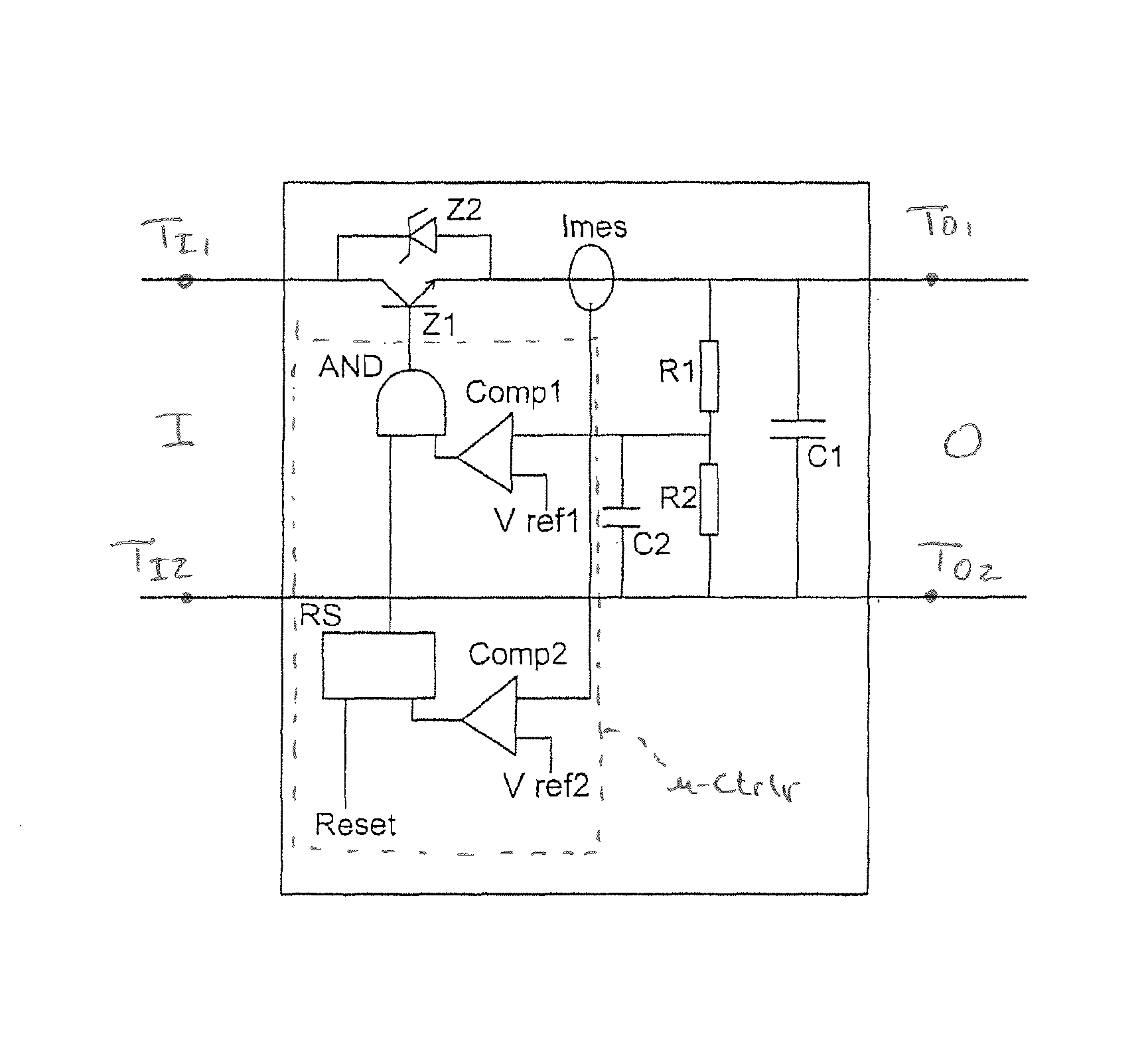Voltage limiter and protection of a photovoltaic module
a photovoltaic module and voltage limiter technology, applied in the field of electromechanical devices, can solve the problems of difficult upgrade, limiting the flexibility of photovoltaic installations, and combining converters and rows of modules
- Summary
- Abstract
- Description
- Claims
- Application Information
AI Technical Summary
Benefits of technology
Problems solved by technology
Method used
Image
Examples
first embodiment
[0055]FIG. 2 illustrates the invention: an electronic limiter is inserted into the electric circuit between a photovoltaic field and a converter.
[0056]Thus, 3 photovoltaic fields 2, 4, 6, a voltage limiter 8 according to the invention, and a converter 10, connected to the electric network 12 are illustrated in this figure. The invention is not limited to three photovoltaic fields, but applies to any number of these fields. Subsequently, in the text, the whole of the voltaic fields will be designated by the single numerical reference 2.
[0057]The voltage limiter device 8 according to the invention is placed between the photovoltaic modules 2 and the power converter 10; it is preferably placed as close as possible to the photovoltaic modules, in order to provide the most effective protection against electric arcs and short circuits.
[0058]The ideal place is an installation directly at the output of the photovoltaic module.
[0059]The limiter device 8 ensures a limitation of the no-load vo...
second embodiment
[0075] the converter 10 is in operation, as well as the photovoltaic field 2, 4, 6.
[0076]When the converter is activated, it consumes a substantial current. The voltage at the terminals of C1 decreases very rapidly and passes under the threshold of the reference of the comparator Comp1, and the latter closes the switch Z1. The converter 10 imposes a voltage corresponding to the maximum power being provided by the photovoltaic field. The voltage measured by R1 / R2 therefore does not pass again above the reference value Vref1 since the latter was adjusted for a voltage at the terminals of C1 slightly above the optimum power voltage of the field. The switch Z1 therefore remains permanently closed, thereby powering the converter 10.
[0077]In a third operating mode, there is an opening of the circuit between the limiter device 8 and the converter 10.
[0078]This opening may result from the opening, either accidental or not, of a connector or of an electric connection between the means 8 and ...
PUM
 Login to View More
Login to View More Abstract
Description
Claims
Application Information
 Login to View More
Login to View More - R&D
- Intellectual Property
- Life Sciences
- Materials
- Tech Scout
- Unparalleled Data Quality
- Higher Quality Content
- 60% Fewer Hallucinations
Browse by: Latest US Patents, China's latest patents, Technical Efficacy Thesaurus, Application Domain, Technology Topic, Popular Technical Reports.
© 2025 PatSnap. All rights reserved.Legal|Privacy policy|Modern Slavery Act Transparency Statement|Sitemap|About US| Contact US: help@patsnap.com



